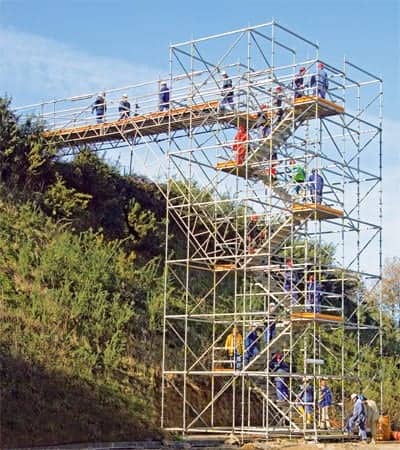The guys at 48.3 Scaffold Design have written this great Q & A on how to make the big step from being a Scaffolder to Scaffold Designer.. Enjoy.
People in the scaffolding industry often ask us “how do you get into scaffold design?” and some are interested in making the change themselves. It is not an easy transition to make, as Andrew Kitley from the
48.3 Scaffold Design team explains in this Q & A.
Andrew began the transition from scaffolder to scaffold designer in 2008 and has now gained experience of a wide range of design work, as well as providing valuable practical insights through his first-hand knowledge of scaffold erection. Here Andrew explains how he started in the scaffolding industry, followed by the trials, tribulations and triumphs of his personal journey so far from scaffolder to scaffold design engineer.
How long were you a scaffolder for, and what level did you reach?
I first started scaffolding in 2000 when one of my friends asked me to help out at his Dad’s company for a week. I loved the laughs I had on site that week and decided to take it up full-time. I progressed through the ranks overs the years as most do, from labourer, to second-hand, charge-hand and, finally, supervisor.
What made you want to become a design engineer and when did you make that decision?
In 2008 I decided that I should try to find a career that has more longevity and not put my body under the continuous physical strains that scaffolding does.
What was the first step in your transition from scaffolder to scaffold designer?
I was in a very fortunate position where the person who taught me how to scaffold had recently started the transition to a design engineer himself. We discussed different routes I could try in order to get a job within a company that could train me, and in a lucky twist of fate the company where he was working was looking for trainee designers.
How long have you been designing scaffolding and has design work made you think differently about scaffolds?
I have now been designing scaffolding for three and a half years, but it has not been without its struggles. When I started designing I found it frustrating that the people around me were telling me how to draw scaffolding, when I had been erecting it successfully for years. In my opinion you have to forget what you think you know because your ‘say-so’ or experience doesn’t actually mean anything if the scaffold cannot be proven (in calculation).
What qualifications have you gained and what do you plan to achieve in the future?
This summer will see me attain my HNC in Civil Engineering and I am looking forward to continuing on the degree course at Southbank University. Engineering is an amazing subject to learn and I find it really enjoyable.
How has your previous experience in scaffolding helped you?
I try to use my knowledge of erection procedures (i.e. how I would safely carry out the work) in my designs and the rest of the team will tell you I am not shy when it comes to details on drawings.
What has been the hardest part of becoming a designer?
The hardest stepping stone for me has been continuing education. I have struggled at university; this is not to do with the work but with managing my time correctly around my studies. The first day of university was the first time I had written anything other than my name and address in over 8 years. To study the correct amount you need three evenings a week and probably most of your weekend. From start to finish it will take me a minimum of six years to attain a degree in engineering.
What is the most enjoyable thing about being a scaffold designer?
There are many rewarding aspects of designing scaffolding: not hating your job throughout the whole of winter; solving problems theoretically and then being able to see it work in practice; and the one I enjoy the most is the respect you receive from everyone for your knowledge.
Finally, do you have any advice for anyone who would like to make the switch from scaffolder to scaffold designer?
For anyone wishing to become a design engineer, I would say you must consider that you will take a considerable pay cut, depending on you ability as a scaffolder it could be up to 50%. To reach a proficient engineering level you will need to work towards a degree, this will mean studying and if you have children or even a very active social life/long work hours you will find this difficult.
With Thanks to 48.3 Scaffold Design, visit their site for more information



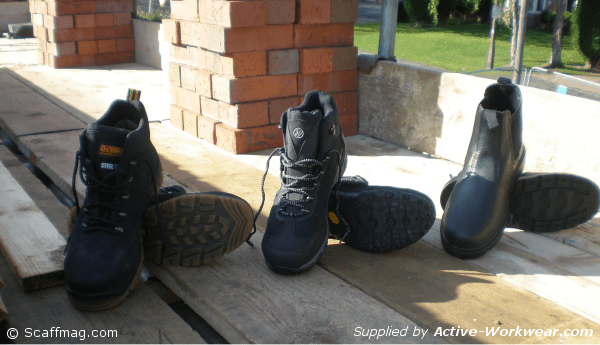
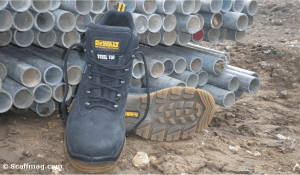 I have had some top quality boot’s in the past, Timberland,Caterpillar to name but a few but my first impression of the Dewalt Challenger was that these were in the same league or maybe better.
They look stylish and expensive although a little chunky they feel quite light on the feet, and when you first wear the boots you can certainly feel the cushioned gel bag that is inside the sole while walking over rough terrain.
Normally with boots I have had in the past the first thing to go wrong is snapping the laces or the sole starting to split but with the Dewalt Challenger I don’t think you would have that problem as the laces feel very strong and the sole being attached to the boot via injection.
I think the only downside to the Dewalt Challenger is the price tag at a whopping £85 quid there not cheap!
Overall Performance:
I have had some top quality boot’s in the past, Timberland,Caterpillar to name but a few but my first impression of the Dewalt Challenger was that these were in the same league or maybe better.
They look stylish and expensive although a little chunky they feel quite light on the feet, and when you first wear the boots you can certainly feel the cushioned gel bag that is inside the sole while walking over rough terrain.
Normally with boots I have had in the past the first thing to go wrong is snapping the laces or the sole starting to split but with the Dewalt Challenger I don’t think you would have that problem as the laces feel very strong and the sole being attached to the boot via injection.
I think the only downside to the Dewalt Challenger is the price tag at a whopping £85 quid there not cheap!
Overall Performance:
 After wearing the Dewalt boots for a week i was eager to try out the Apache pair.
The Apache boots are the lightest out of all being reviewed and I could certainly feel they felt different, they just felt right.
With the boots feeling so light on the feet you felt as if you could walk and carry gear for hours in them, which I did.
The Apache gives you great support to the foot and supported the ankle well. The grip on the soles gives you a sense of support when climbing.
The only downside I could find with the boots was the laces they seem a little thin for a work boot.
Overall a fantastic pair of boots that don’t actually feel like work boots.
Overall Performance:
After wearing the Dewalt boots for a week i was eager to try out the Apache pair.
The Apache boots are the lightest out of all being reviewed and I could certainly feel they felt different, they just felt right.
With the boots feeling so light on the feet you felt as if you could walk and carry gear for hours in them, which I did.
The Apache gives you great support to the foot and supported the ankle well. The grip on the soles gives you a sense of support when climbing.
The only downside I could find with the boots was the laces they seem a little thin for a work boot.
Overall a fantastic pair of boots that don’t actually feel like work boots.
Overall Performance:
 I know the saying goes you should never judge a book by its cover but I just couldn’t help it when I first set eyes on them I thought they looked like the sort of boots a young apprentice would be made to wear on his first day.
But after wearing them for a few days I realised they were comfortable and just good for just slipping on and off with no worries of having to tie the laces all the time.
The boots are made of leather with a steel mid-sole and petrol and chemical resistant so they are built to last.
If you are looking for some cheap no nonsense, does what it says on the tin kind of boots then these leather dealer boots are for you.
Overall Performance:
I know the saying goes you should never judge a book by its cover but I just couldn’t help it when I first set eyes on them I thought they looked like the sort of boots a young apprentice would be made to wear on his first day.
But after wearing them for a few days I realised they were comfortable and just good for just slipping on and off with no worries of having to tie the laces all the time.
The boots are made of leather with a steel mid-sole and petrol and chemical resistant so they are built to last.
If you are looking for some cheap no nonsense, does what it says on the tin kind of boots then these leather dealer boots are for you.
Overall Performance:
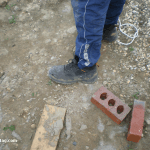




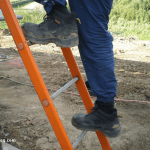
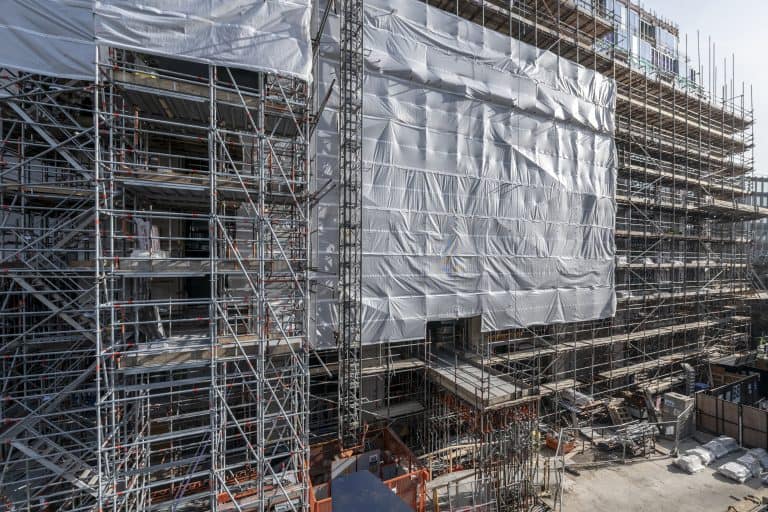


 A new publication issued by Harsco Infrastructure has been designed to help construction industry professionals re-appraise their safety procedures for operations which involve working at height. Intended for use by client and
contractor staff at all levels, the new Harsco Infrastructure Guide to Working at Height is set to become an invaluable source of relevant information and best-practice guidance.
The new 34-page document is believed to be the most up-to-date, comprehensive and authoritative of its kind and draws on Harsco Infrastructure’s experience as a world-leading supplier of access, formwork, shoring and maintenance services and products to the construction and industrial markets. Its contents have been designed to help the reader understand the many implications of working at height, adopt best practice procedures, select the most appropriate equipment and access and offer guidance on its safe use.
Harsco’s Health and Safety SHEQ Director, Tony Horsfall said:
A new publication issued by Harsco Infrastructure has been designed to help construction industry professionals re-appraise their safety procedures for operations which involve working at height. Intended for use by client and
contractor staff at all levels, the new Harsco Infrastructure Guide to Working at Height is set to become an invaluable source of relevant information and best-practice guidance.
The new 34-page document is believed to be the most up-to-date, comprehensive and authoritative of its kind and draws on Harsco Infrastructure’s experience as a world-leading supplier of access, formwork, shoring and maintenance services and products to the construction and industrial markets. Its contents have been designed to help the reader understand the many implications of working at height, adopt best practice procedures, select the most appropriate equipment and access and offer guidance on its safe use.
Harsco’s Health and Safety SHEQ Director, Tony Horsfall said:

